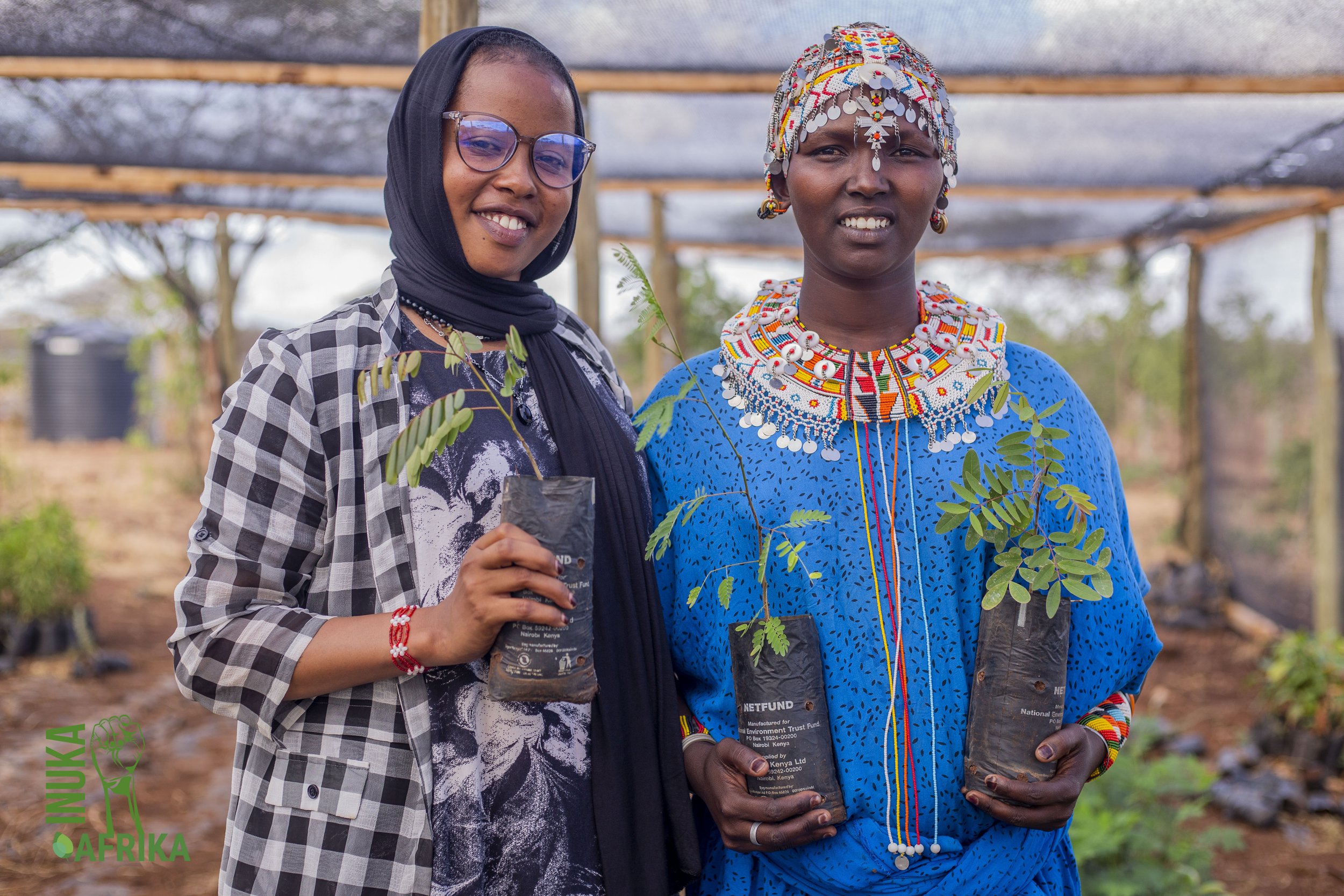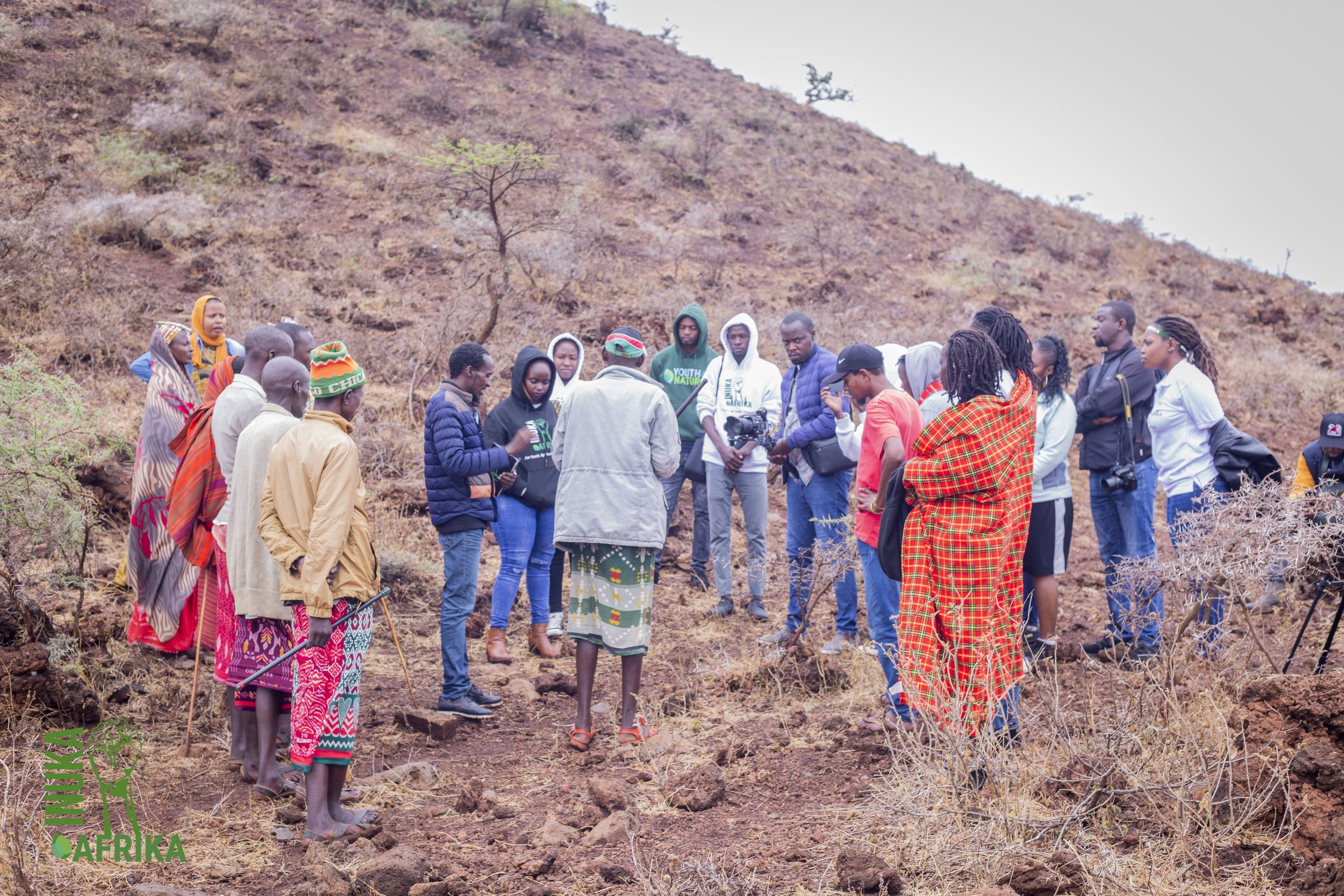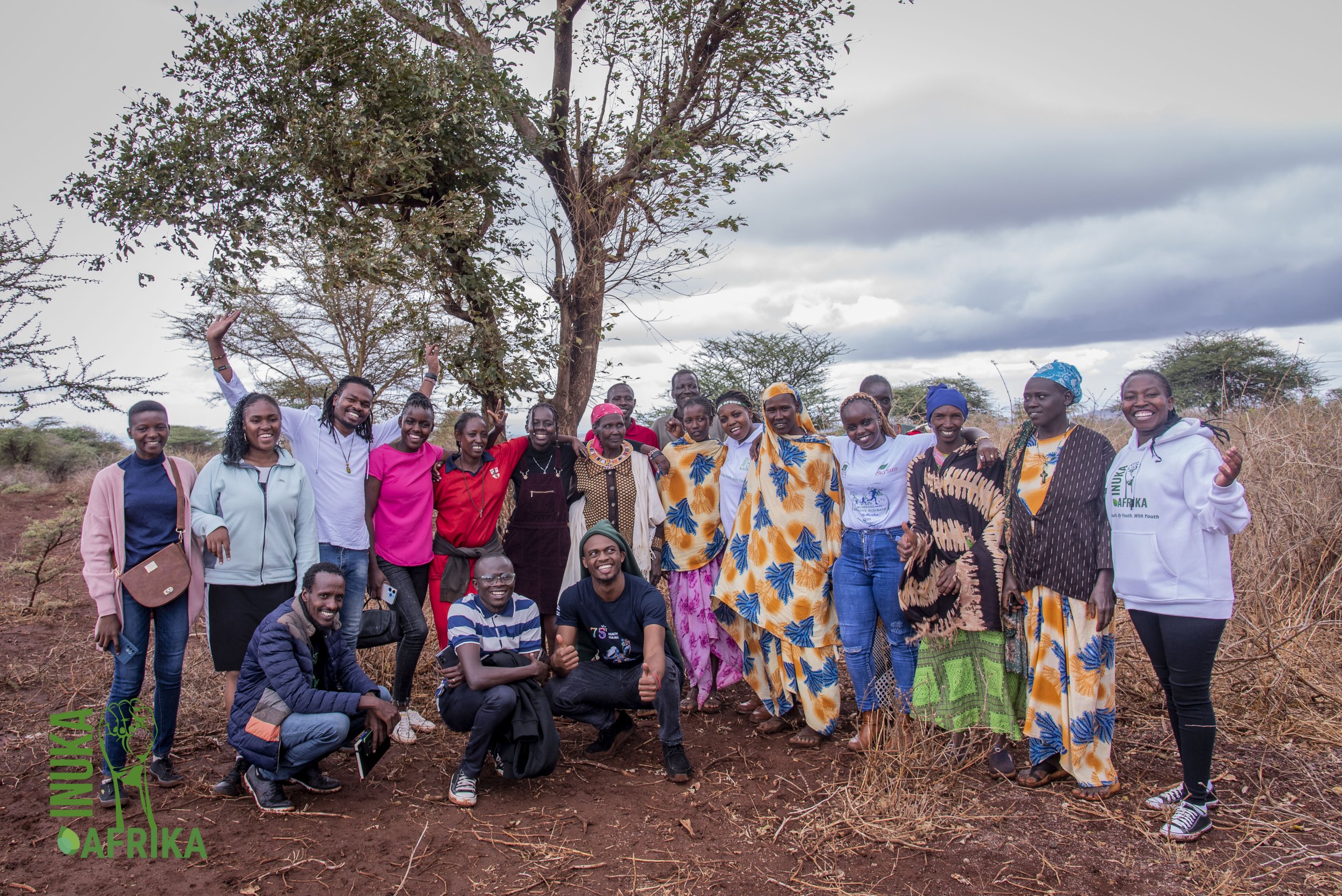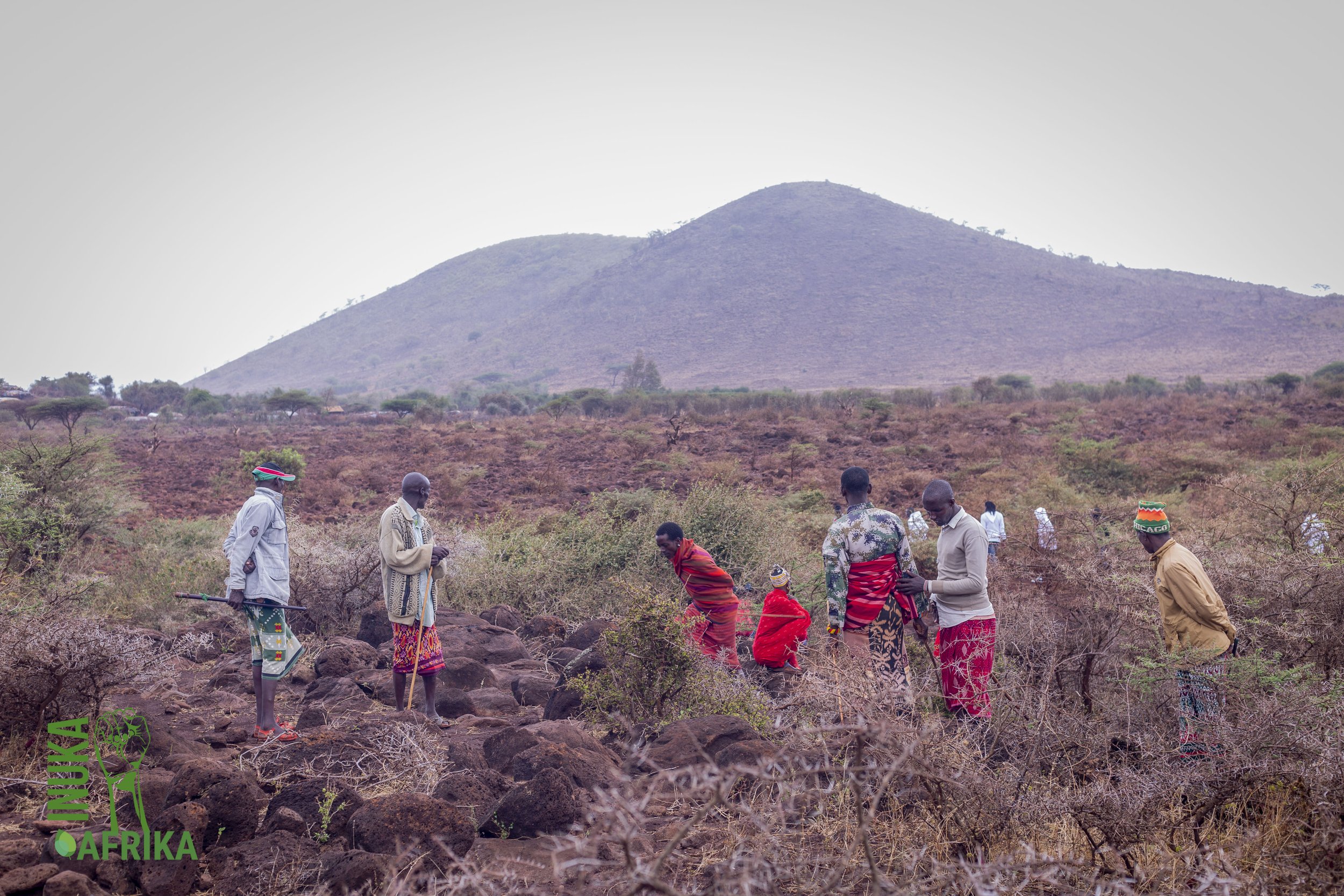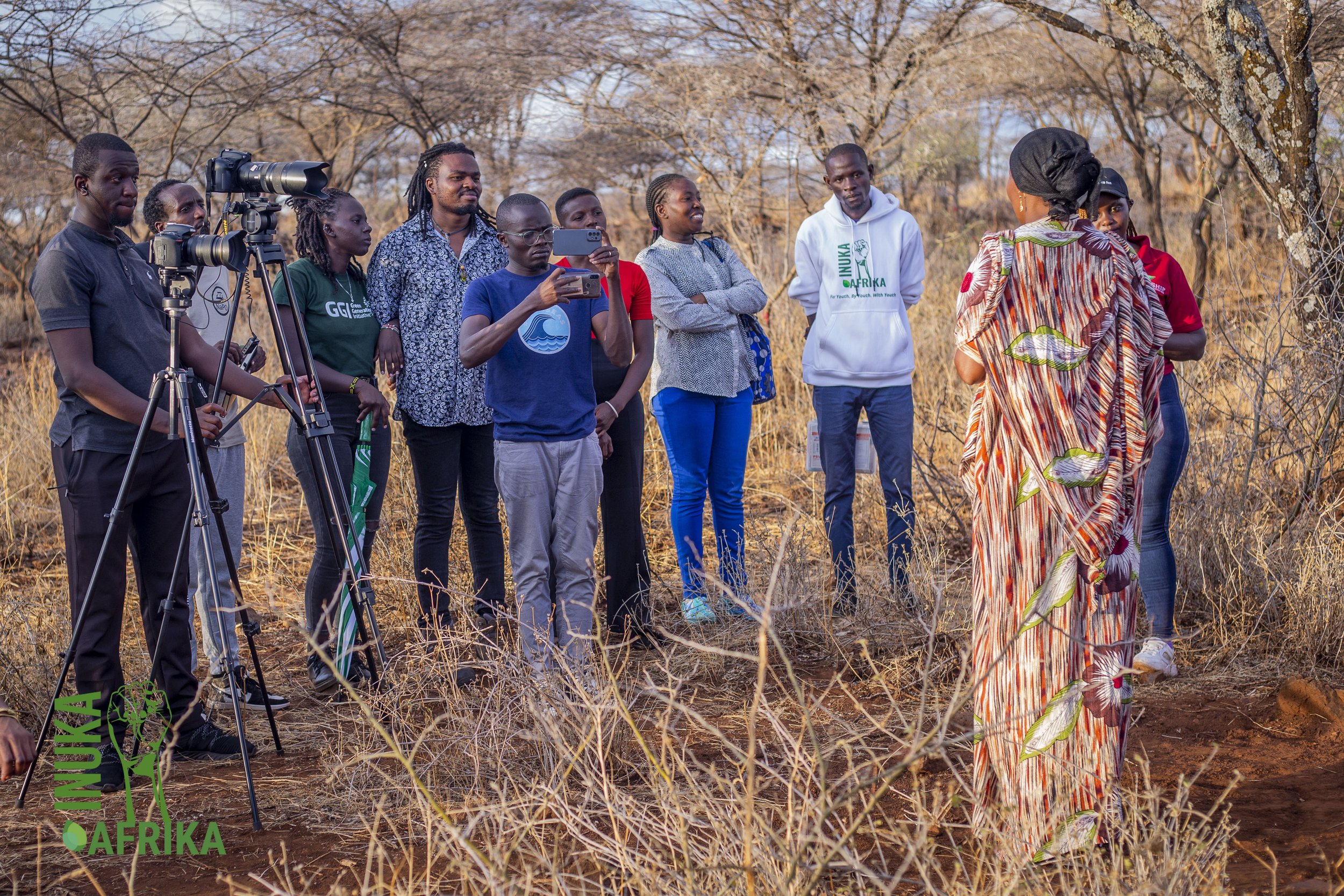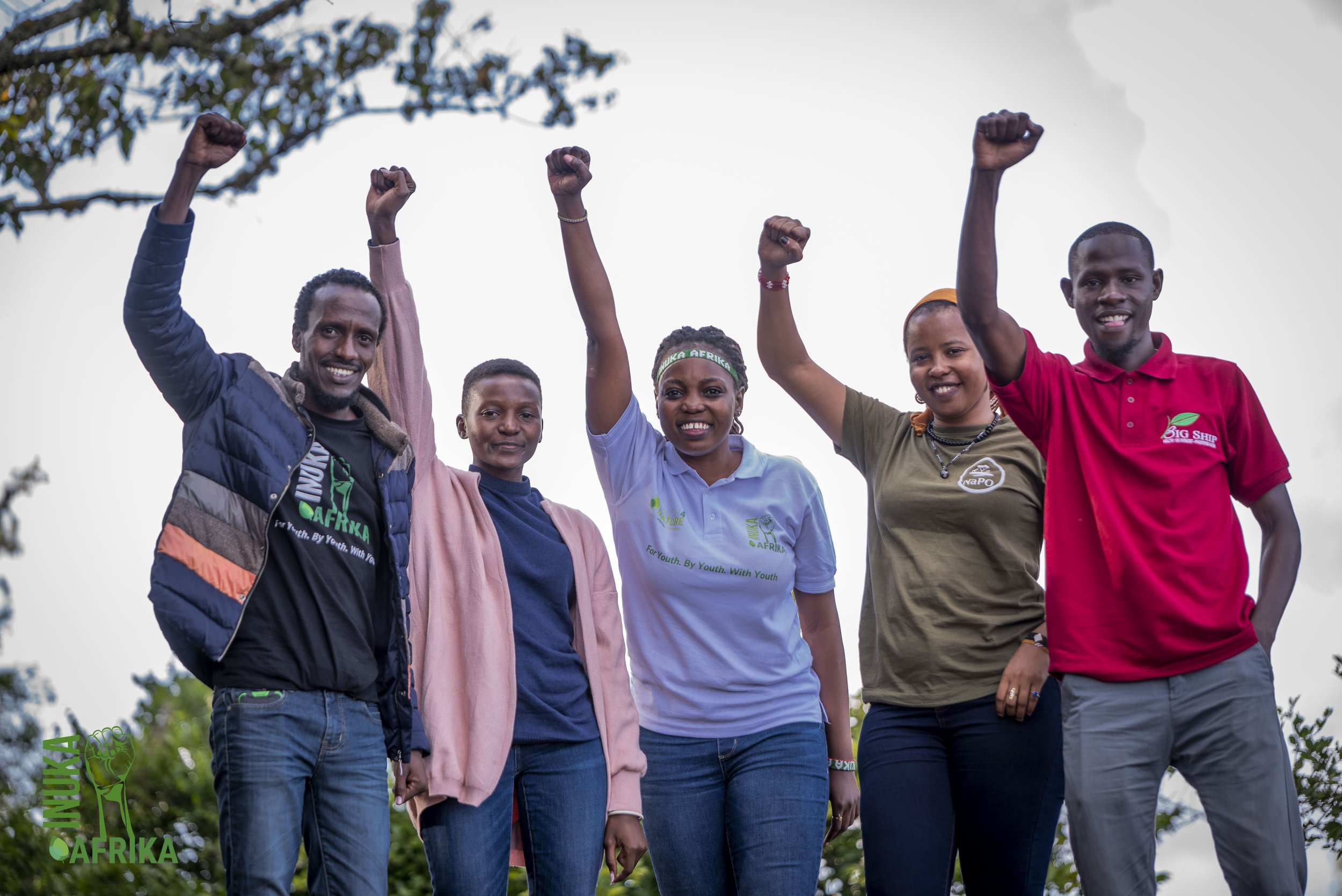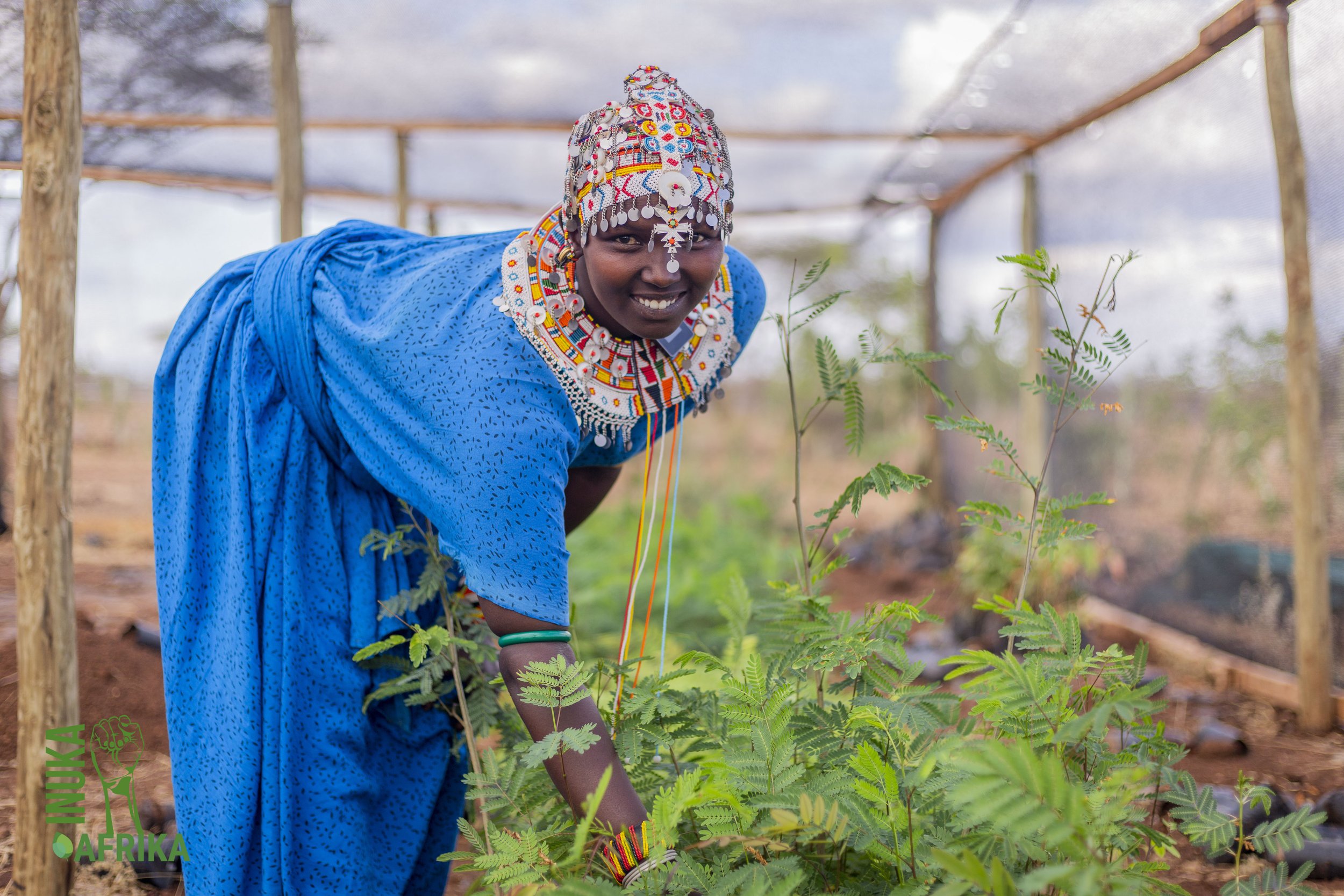Join us as we unfold the chapters of NaPO's green odyssey, where the roots of change run deep and the leaves of transformation flourish
In the heart of Marsabit, Kenya, a remarkable initiative known as NaPO is quietly making waves as a symbol of unity between nature and people. NaPO, an acronym for Nature and People as One, draws its essence from the indigenous languages of the Rendille and Samburu communities. Derived from the term "/naabo/," meaning a place where community elders gather in the evening to discuss matters crucial to their society, NaPO embodies a commitment to intertwining the destinies of people and the environment. This youth team is not merely a beneficiary but a driving force behind the INUKA pilot project, demonstrating the power of collaboration and sustainable practices. At the core of NaPO's mission is the utilization of Farmer-Managed Natural Regeneration (FMNR), a biodiversity restoration technique that emphasizes the intrinsic connection between nature and community. In a recent study visit, INUKA youth delved into the heart of FMNR, acquiring hands-on experiences that expanded their knowledge and fueled their passion for environmental stewardship.
Exploring NaPO Sites: A Symphony of Trees
The landscapes of Loglogo and Karare paint a vivid picture of sustainable coexistence between communities and nature. Acacia trees, resilient and easily managed by the locals, thrive in these regions. The diverse array of species, including Acacia tortis, Acacia senegal, Acacia xanthophloea, Acacia mellifera, and Acacia balanites, stands as a testament to the harmonious partnership between NaPO and the environment. Visiting the NaPO site at LogLogo Girls Secondary School reveals a nurturing initiative that goes beyond planting trees; it's about cultivating an environmentally conscious posterity. Collaborating with students, NaPO plants indigenous tree species like Lucerne, Senna spectabilis, Senna siemea, and Neem tree, supplying seedlings not only to the school but also to neighboring communities and institutions engaged in tree planting.
Karare's Resilience: A Community United for Change
In Karare, where the elders and youth jointly manage community land, NaPO's training has sparked a profound transformation. Facing a daunting five-year drought, this community's commitment to combating climate crises through Nature-Based Solutions (NbS) is nothing short of inspiring. A by-law, sternly enforced by elders, declares accountability and fines for those who dare to cut down marked trees. A dedicated committee spearheads restoration activities, emphasizing the restoration of acacia tree species vital for the ecosystem. The commitment of Karare to environmental stewardship showcases resilience and a model for sustainable community-driven change.
The Science and Soul of FMNR Implementation
NaPO's adoption of Farmer-Managed Natural Regeneration is rooted in a profound rationale. With land collectively owned by the community, involving them in the restoration program is the key to success. FMNR focuses on managing existing tree species in drylands, employing techniques like marking young trees with red paint to prevent them from being cut down and providing support to weak trees for proper growth. By centering efforts on the restoration of acacia tree species, NaPO ensures a minimal conservation footprint while restoring biodiversity.
Regular field visits allow the NaPO team and the community to monitor tree progress and count managed trees over three-month intervals. The significance of marking trees extends beyond preservation; it symbolizes ownership and a shared responsibility to protect and conserve. NaPO's commitment to integrating the community into FMNR site management promotes livelihoods and addresses challenges such as water scarcity and environmental degradation.
Empowering Lives Beyond Trees
Beyond tree planting and conservation, NaPO is dedicated to providing alternative livelihoods to the community. Involvement in tree nursery maintenance, apiculture training, and the distribution of beehives, particularly to women's groups, stand as solutions that bridge human-wildlife conflicts. Local scouts employed by NaPO act as quick responders to incidents, ensuring a harmonious coexistence between communities and wildlife.
The Art of Impact Storytelling
In a reflective session on ecosystem understanding, the youth participants of INUKA embraced the art of storytelling. Drawing from INUKA's curriculum, the team explored the drivers and causes of ecosystem degradation, unearthing emotions and resilience among the youth. Storytelling becomes a powerful tool, evoking emotions that inspire action and potential funding from donors. By listening to and understanding our ecosystems, we can craft compelling narratives of restoration, promising a ripple effect of change.
As we embark on this journey with NaPO, we delve into a narrative where nature and people truly become one, forging a path toward a sustainable and harmonious future. Join us as we unfold the chapters of NaPO's green odyssey, where the roots of change run deep and the leaves of transformation flourish.
Cultivating a Green Legacy Together
As the sun sets on NaPO's transformative journey, the partnership with INUKA stands tall as a guiding beacon. INUKA's pilot program, with its visionary objectives to propel youth-led Nature-Based Solution projects across Kenya, has been the catalyst for NaPO's evolution. Through the lens of collaboration, NaPO has expanded its horizons and forged connections with like-minded youth organizations, creating a vibrant network of environmental stewards.
INUKA's training and exposure visits have been instrumental, providing NaPO with invaluable insights into alternative approaches to tackling climate challenges. The learning modules, especially on proposal writing and grant-seeking, have equipped NaPO members with the tools to navigate the complex landscape of funding, fostering healthy relationships with donors. The storytelling sessions, a gift from INUKA, have empowered NaPO to articulate their restoration journey with passion and purpose, ensuring that their message resonates far and wide.
As NaPO gains the capacity to address a broader spectrum of nature-based problems, it becomes evident that working together yields superior results. The collaborative spirit has enhanced NaPO's ability to listen and understand ecosystems better and propelled their restoration project to cover a larger, more impactful landscape. The seeds planted by NaPO and nurtured by the INUKA partnership are destined to grow into a lush legacy of environmental stewardship.
Conclusion
In the grand tapestry of nature, our ecosystems are not merely landscapes; they are our shared responsibility—a responsibility to preserve, protect, and restore to its former glory. As NaPO continues to sow the seeds of change, let us remember that the journey to a sustainable future is one that we embark upon collectively. Working hand in hand, we cultivate a green legacy for the generations yet to come, ensuring that the harmony between nature and people remains an enduring melody in the symphony of our shared existence.
Follow NaPO on Instagram to stay up to date on their incredible work!


